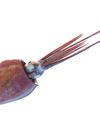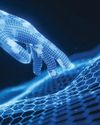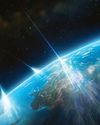
Using a brass telescope of his own design, Galileo spent hours spying on worlds beyond our own. What he discovered changed the way we viewed the Solar System. Born in Pisa, Italy, in 1564, Galileo Galilei spent his youth as a keen musician and medical student at the University of Pisa. However, like so many other great minds, Galileo felt the pull of mathematics and found himself immersed in the worlds of mechanics and astronomy. Before his rise to academic stardom, the world largely viewed the universe through the eyes of Greek philosophers such as Aristotle. Based on the existence of celestial spheres and an Earth-centric view of the universe, the science of astronomy in the early 16th century was very much in its infancy. At least until Galileo began a scientific revolution using a new invention.
Arguably his most important contribution to science was the creation of his refracting telescope. Having discovered a new instrument called the spyglass in 1609, Galileo began experimenting with how he might use it to magnify his view of the world and beyond. Although Galileo didn’t technically invent the telescope, which was first patented by Dutch eyeglass maker Hans Lippershey, his modifications to the original design gave him the ability to gaze at the stars with unrivalled precision. Wasting no time, Galileo pointed his telescope towards the stars for the first time in 1610. The year that followed was filled with lunar discoveries, solar revelations and planetary observations that changed the way we view the celestial residents of space. From Moon craters to Saturn’s ‘ears’, Galileo saw objects in space up close using his refractor telescope, which he developed to have a magnification of up to 30 times.
この記事は How It Works UK の Issue 179 版に掲載されています。
7 日間の Magzter GOLD 無料トライアルを開始して、何千もの厳選されたプレミアム ストーリー、9,000 以上の雑誌や新聞にアクセスしてください。
すでに購読者です ? サインイン
この記事は How It Works UK の Issue 179 版に掲載されています。
7 日間の Magzter GOLD 無料トライアルを開始して、何千もの厳選されたプレミアム ストーリー、9,000 以上の雑誌や新聞にアクセスしてください。
すでに購読者です? サインイン

INCREDIBLE SOLAR SYSTEM CRATERS
Why these spectacular craters carved out by past impact events are among the most widespread and distinctive geological features in the Solar System

HOW NORTH AMERICA'S GREAT LAKES FORMED
The world's largest freshwater system comprises five immense interconnected lakes, carved into Earth by glaciers

BUILDING THE WORLD'S DEEPEST CAR PARK
Australia's most famous landmark is often marvelled at from ground level, but its innovative spiral substructure is a hidden gem

FINDING THE COLOSSAL SQUID
This elusive creature spawned a legend of a deep-sea monster that endured for centuries

Octopuses burn more calories changing colour than you do on a 23 minute run
For octopuses, changing colour burns about as many calories as a human on a 23-minute run. Octopuses are masters of disguise, changing colour at the drop of a hat to startle predators and hide from prey.
The world's first silicon-anode battery could revolutionise electronic vehicles
A ceramic battery manufacturer has unveiled a solid-state battery concept that can be charged from 5 to 60 per cent capacity in just five minutes, giving future electric vehicles (EVS) a 186-mile range in the time it takes to order a coffee.

New technology gives AI the power to feel surfaces
Scientists have given artificial intelligence (AI) the capacity to 'feel' surfaces for the first time, opening up a new dimension for deploying the technology in the real world.

Visit Plane Earth 2125
How might our world have transformed under the strain of climate change 100 years from now?

The world's largest organism may have been growing for 80,000 years
Pando, an enormous quaking aspen that spans more than 40 hectares in Utah, is not only one of the largest known organisms on Earth, it's also one of the oldest.

Scientists detect the most powerful cosmic rays ever
Scientists have detected the most energetic cosmic rays ever discovered, and they're being produced by mysterious sources relatively close to Earth.